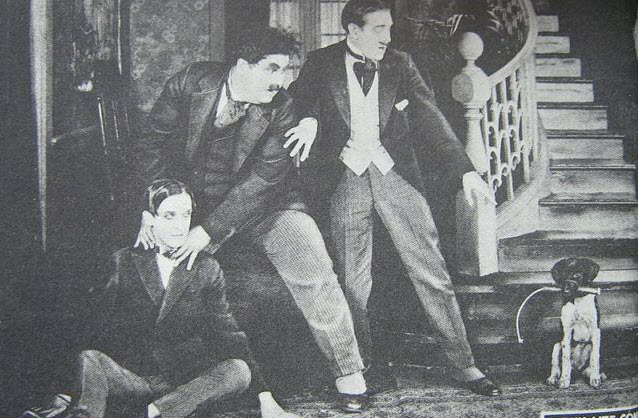Just the sight of these two together brings back childhood memories of laughter and joy. Stan Laurel, the thin, gentle man whose innocent actions often led to trouble, and his partner, the rotund Oliver Hardy, who usually bore the brunt of the mishaps. This dynamic duo captivated Hollywood, not just for their immense popularity or their prolific output of 107 films, but for a genuine friendship that lasted until their deaths. Such was their bond that Laurel fell into a deep depression after Hardy’s passing, prompting him to retire from show business altogether.
Stan Laurel was born in 1890 in Ulverston, England, into a family that cherished the arts. His talent was evident from a young age, and by 16, he made his stage debut in Glasgow. Laurel traveled to the United States multiple times with his theater troupe, “Fred Karno,” performing a variety of acts, including impersonations of Charlie Chaplin. Seeing the opportunities in America, he decided to settle there, taking roles in silent films and performing on stage until he met his future partner, Oliver Hardy.
Unlike Laurel, Oliver Hardy was born in 1892 in Harlem, Georgia, to a family with no ties to acting, theater, or cinema. Initially studying law, Hardy abandoned his studies in 1910 to manage a movie theater. He took on every job imaginable in the theater, from selling tickets to cleaning up, driven by his dream of becoming a movie star. Hardy began landing roles in numerous films in Florida for the Lubin Manufacturing Company, often portraying villains or buffoons, leveraging his distinctive size for comedic effect. With the decline of the Florida film industry, he moved to California, where he eventually crossed paths with Stan Laurel.
The two first appeared together in a 1921 short silent film titled “The Lucky Dog.” Produced by Hal Roach, this comedy followed Stan, a down-and-out young man who finds true friendship with a stray dog, while Hardy played a blackmailer trying to rob them both. Despite working together, Laurel and Hardy did not form a team or friendship at this stage, nor did they co-star in another film for some time.

In 1926, they were both involved in the production of another short silent film, “45 Minutes from Hollywood,” also produced by Hal Roach. Although they did not share any scenes, their backstage interactions marked the beginning of a fruitful partnership. Together, they formed a comedy duo that captivated audiences with their naive, childlike innocence. Their films consistently brought tears of laughter, with Hardy typically playing the serious role, focused on goals like making money or winning a girl’s affection, while Laurel played the bumbling fool whose mistakes repeatedly landed the pair in trouble. Hardy’s famous line to Laurel, “Well, here’s another nice mess you’ve gotten me into,” became a staple of their comedic routine.
The duo enjoyed significant success throughout the 1930s under the production of Hal Roach. However, in the 1940s, after signing with 20th Century Fox, their popularity began to wane as new stars emerged. By the early 1950s, both were contemplating retirement, although they continued to tour Europe, where they were always warmly welcomed. Their partnership came to a tragic end in 1957 when Hardy suffered a stroke and passed away. At the same time, Laurel was in poor health and was so devastated by Hardy’s death that he could not bring himself to attend the funeral. Overwhelmed by grief, he fell into a deep depression and never performed again. In a letter to their fans, Laurel expressed how lost he felt without Hardy after 30 years of close friendship and collaboration.
Laurel retired to Santa Monica, where he lived until his death in 1965. During the last eight years of his life, he devoted himself to his fans, meeting with them and eagerly listening to their memories and thoughts about him and Hardy. He exchanged letters with admirers and, until his eyesight failed, personally responded to every fan letter he received.

This translation aims to capture the essence of Laurel and Hardy’s enduring partnership, highlighting their individual paths to stardom and the profound impact of their shared career. The adaptation focuses on originality and authenticity, ensuring a fresh perspective on their legendary friendship and comic legacy.
